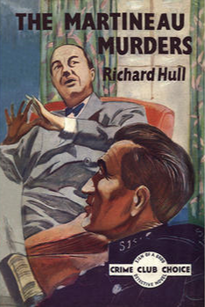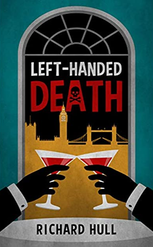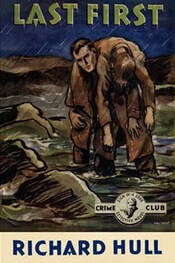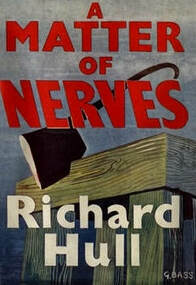
Convinced he is dying, Mr. Martineau decides to settle some imagined scores among the villagers of Underfield. Through diary entries, the reader learns that the once-prosperous squire has set his sights on Dwyer, a wealthy neighbor who has bought the family hall and property at a fair price, but with whom Martineau regularly argues about the upkeep of the water stream and the footbridge. There is also a gossipy man named Bowen whom Mr. M deems worthy of dispatch. As for the others in the village, they are irritants – from fluttery Miss Jefferson, who has a cough that especially displeases Martineau, to Mrs. Venner, who is particularly reluctant to sell the squire a custard tart – but for now escape a judgment of death.
But Martineau’s plans don’t go off as expected, largely because of the scattershot approach to setting his traps. Sabotaging the footbridge, tampering with automobile brakes, and growing a questionable batch of salmonella bacteria all yield results, but in each case either the intended victim escapes unscathed or an innocent party is injured or dies. Through these misfortunes, Martineau shows no remorse and great self-regard. By the time events and coincidence provide a strange sort of justice, Mr. Martineau may be past the point to appreciate the irony of it all.
I appreciated the simple cause-and-effect momentum of this book, especially since propulsive plotting is sometimes missing from Richard Hull’s stories. (Books like Last First [1947] and Invitation to an Inquest [1950] trap the reader in a languor that makes one yearn for a speedy conclusion.) Martineau’s narration and scheming move things along, and if the outcome is fairly obvious – the antihero is just too conceited and his execution too sloppy for his efforts to truly succeed – the journey is a darkly enjoyable one. It is also appealing that many of the characters we see through Martineau’s eyes are genuinely aggravating, whether it is the condescending and pompous Dr. Ritson or the selectively deaf groundsman Ashard, who has been secretly selling the squire’s surplus produce and eggs for a profit.
But the irritable, vain narrator at the story’s center is perhaps the most consistent element within the author’s oeuvre. Richard Hull seems to be fascinated by egotistical, petty males with an axe to grind, people who quickly find fault with others and are often driven to murderous distraction. Indeed, Hull’s best work seems to contain this archetype, from the dandy trying to kill his sainted Aunt to the dyspeptic copy writer in Murder Isn’t Easy (1936) to the curmudgeon-as-victim in Excellent Intentions (1938). Hull’s most meta-literary incarnation is Richard Sampson, the lawyer squirming under pressure in 1940’s wonderfully twisty My Own Murderer: here, the author mischievously gives the hopeful killer his own name.
Hull should also be celebrated for consistently experimenting with style and structure. He often employed an enticing gimmick with his stories: The Murderers of Monty (1937) tackles homicide by incorporated partnership; Last First delivers the last chapter first; A Matter of Nerves (1950) is a first-person narrative from the killer’s point of view where the culprit’s identity is only revealed at the end. With fourteen other books to consider and contrast against, The Martineau Murders is an enjoyable but slight story, one that was delivered more effectively by Richard Hull nearly two decades before.
Genre scholar and mystery writer Martin Edwards has frequently championed Richard Hull’s witty and playful stories. You can find Martin’s review of The Martineau Murders here.




 RSS Feed
RSS Feed